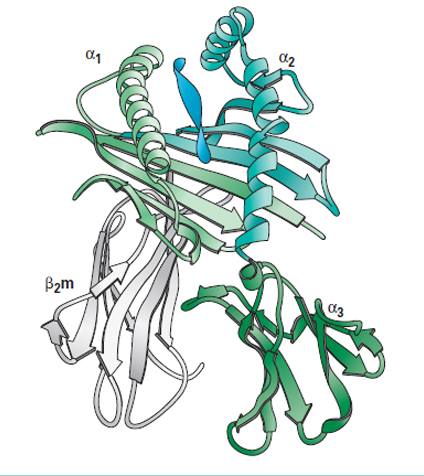1.2 MHC Molecules
The MHC was originally identified because of its role in promoting rejection of foreign tissue grafts. However, this is not its true physiological function, which is presentation of a cell’s internal peptides for review by cytotoxic T cells. The MHC is a gene complex that encodes several different MHC class I and class 2 molecules. The genes are highly variable between different individuals – no two people have the same set of MHC genes (except identical twins). The antigenic peptides that are bound to MHC class I molecules are 8–10 amino-acid residues in length, and they are bound non-covalently in a cleft on the outer surface of the MHC molecule, as shown in Figure 2.
Exactly which peptides can bind to each MHC molecule depends on the amino-acid residues lining the antigen-binding cleft, which is different for each variant MHC molecule. Since everyone has different variants of the MHC molecules, the way that antigenic peptides are presented to T cells is different for each individual. Put simply, everyone’s immune system is genetically unique!
In the next section, you will now look at where those antigenic peptides come from.

